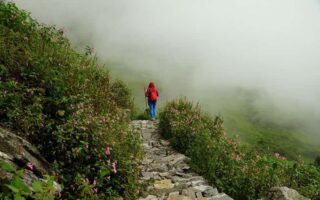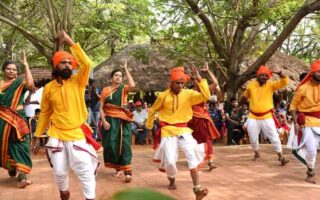Sikkim, one of the smallest states of the country, is a bouquet of many natural wonders that can help you unwind perfectly in the lap of Sikkim’s exotic nature. Some of the best trekking trails of the country lie in the heart of Sikkim, offering just the right amount of adventure to get your adrenaline racing. The panoramic vistas, consisting of forested valleys, shimmering snow-white mountain ranges, and colorful rhododendrons adorning the walking lanes, give Sikkim an out-of-this-world charm.
It is the perfect destination to commune with nature, forget the stress of your hectic city life, and find solace in the midst of pristine nature. When you are in Sikkim, there are certain things you could do to make your tour thoroughly enjoyable and fulfilling. Here are some of the top things you could do or see when in Sikkim:
Teesta River Rafting
- River called Sikkim’s “lifeline”
- Rapids graded from 2 to 4, ideal for rafting
- Sandy beaches perfect for camping
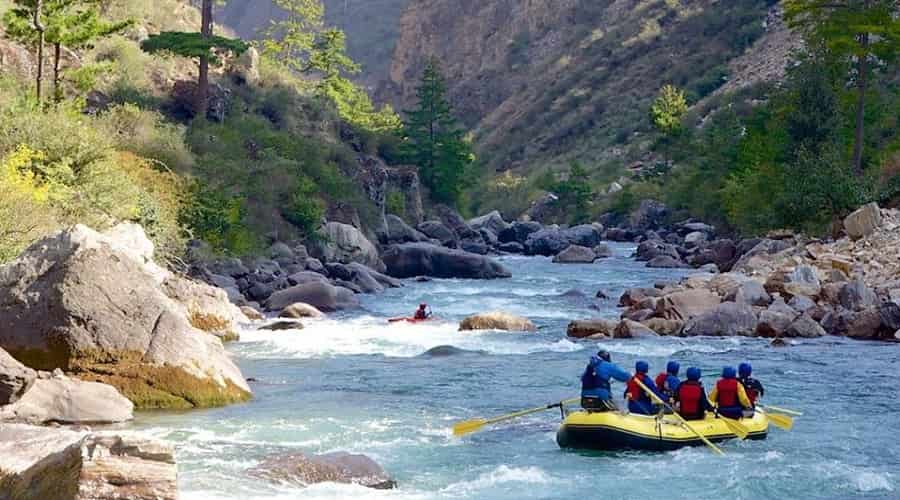
The Teesta River is often referred to as Sikkim’s ‘lifeline’ and comes with some very exciting torrents and rapids that avid rafters crave to tame. White water rafting in Teesta will provide you with a sufficient dose of adrenaline rush. The Teesta courses down rugged slopes and amid boulders, breaking into multiple foamy, frothy rapids, ideal for white water rafting. These rapids range in grade from 2 to 4. The riverbank consists of sandy beaches, which are perfect for camping.
Don’t Forget the Café Live & Loud
- Popular lounge bar in Gangtok
- Features live rock music, bands, and a terrace café
- Great place to experience Sikkim’s nightlife
Café Live and Loud is one of the most happening lounge bars in Gangtok. Live rock music, bands, flashy lights, a fully equipped bar, a terrace café, and an attractive menu make Café Live and Loud one of the best places to chill out and enjoy the magical nightlife of Sikkim. So, this is one venue you shouldn’t miss at all.
Must Explore the Namgyal Institute of Tibetology
- Tibetan-style museum, founded in 1958
- Houses Buddhist artifacts and ancient Tibetan manuscripts
- Promotes cultural research on Tibetan Buddhism
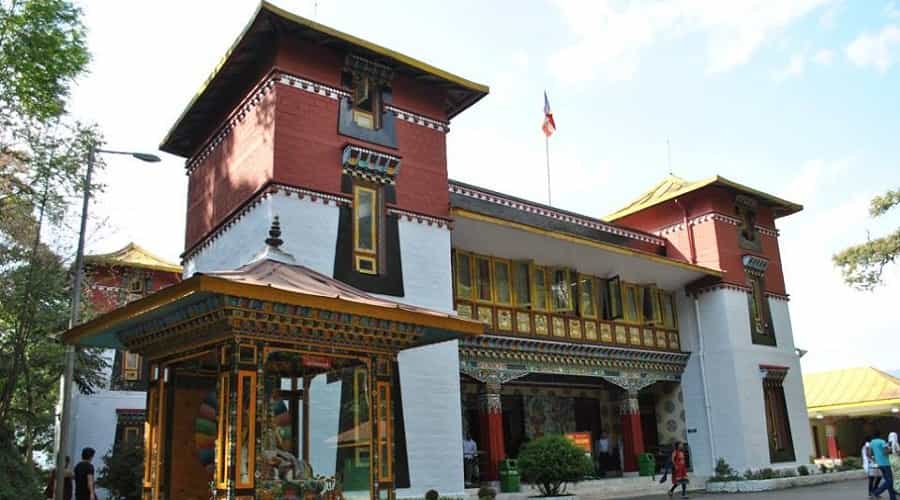
If you wish to have a sneak peek into the rich Tibetan culture, you must visit this Tibetan-style mansion building that houses the Namgyal Institute of Tibetology. This splendid museum was established in 1958 with the aim of fostering the expansion of cultural and scholarly research. The ground floor of the museum is filled with various amazing artifacts associated with Tibetan culture and Vajrayana Buddhism. Among the artifacts are Thangkas, Buddhist icons, manuscripts, Kangling, Thopa, etc. There is also a library on the first floor of the institute that preserves Buddhist texts that are hundreds of years old.
Must Visit Golden Tips
- Famous boutique tea store in Gangtok
- Offers premium Darjeeling and Temi teas
- Tasting sessions of 48 tea variants available
If you love the aroma of tea, you must visit the Golden Tips boutique-style tea store, where a vast array of the finest quality teas is exhibited and sold. The best quality Darjeeling and Sikkimese Temi tea are on display for tea connoisseurs. The teas are sold in attractive packages, and before you buy them, you have the privilege to taste them in the store’s café area. In the café area, you can actually taste as many as 48 tea variants.
Flower Watching in Sikkim
- Famous for rare orchids and seasonal flowers
- Best spots: White Hall Flower Exhibition, Kyongnosla Alpine Sanctuary, and Deorali Orchid Sanctuary
If you are fascinated by the beauty of flowers, Sikkim is one place where you can catch a glimpse of some very rare and exotic flower species. Seasonal flowers, wildflowers, and a variety of orchids grow abundantly in this region of northeast India, presenting a mesmerizing riot of colors. If you wish to indulge in flower watching in Sikkim, the best places to visit are the White Hall Flower Exhibition Show, Kyongnosla Alpine Sanctuary, and Deorali Orchid Sanctuary.
Must Visit the Famed Rumtek Monastery
- Founded in the 16th century by the 9th Karmapa
- Belongs to the Kagyu school of Tibetan Buddhism
- Features a golden stupa and vibrant interior decorations
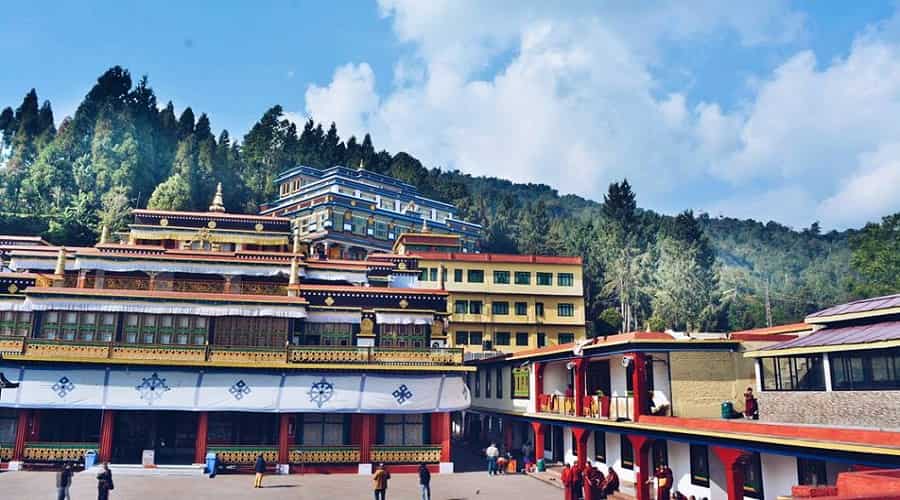
Rumtek Monastery occupies a significant place in the spiritual map of Sikkim. This monastery was founded around the 16th century by the 9th Karmapa, Wangchuk Dorje, and belongs to Buddhism’s Kagyu school. This monastery showcases Buddhist architectural excellence and captivates visitors with its brilliantly colored and decorated interiors. The chief highlight of this monastery is the golden stupa encrusted with colorful stones. Apart from the main shrine, there are buildings like the nunnery, monastic college, and monk quarters within the monastery premises. During Saga Dawa, colorful masked Cham dances are organized by the monastery. A visit to Rumtek will definitely allow you to experience profound beauty and ineffable peace.
Take a Memorable Yak Ride
- Popular in Tsomgo Lake and Dzongri regions
- Ideal between March-May and September-December
- Yaks decorated with woolen knitwear, strings, and bells
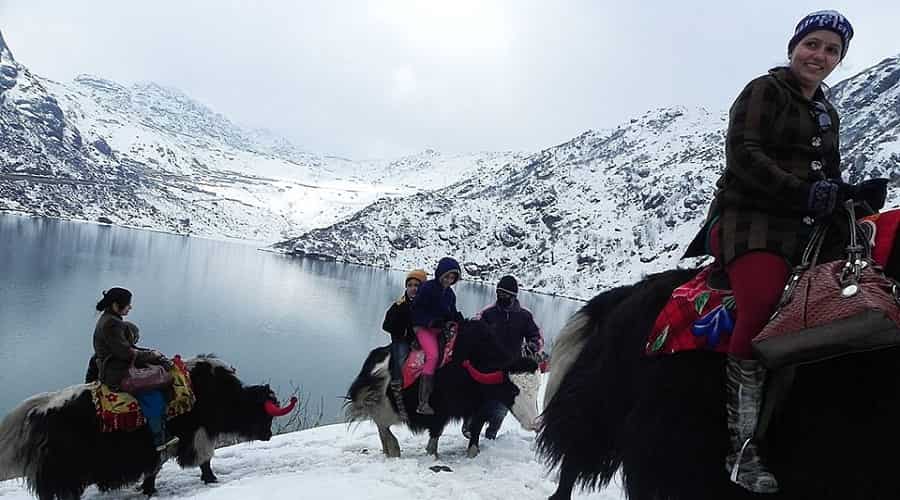
Yaks are gentle and sturdy beasts that can move through rough terrain and withstand the extremes of high-altitude weather conditions. A yak safari in Sikkim is indeed a must-do activity and will surely give you the thrill of your life. As this gentle, furry beast carries you around slowly, you can enjoy the breathtaking scenery to your heart’s content. The yaks are generally decked out with richly colored woolen knitwear, strings, and bells that make them look truly adorable. The best yak safari trails in Sikkim are the Tsomgo Lake region and the Dzongri region. The ideal season to enjoy a Sikkim yak safari is between March and May, and again between September and December.
Enjoy the Gangtok Cable Car Ride
- 1 km ropeway between Deorali Bazaar and Tashiling Point
- Provides a 3500-meter elevation view of Gangtok and Kanchenjunga
- Operational from 8:00 AM to 4:30 PM
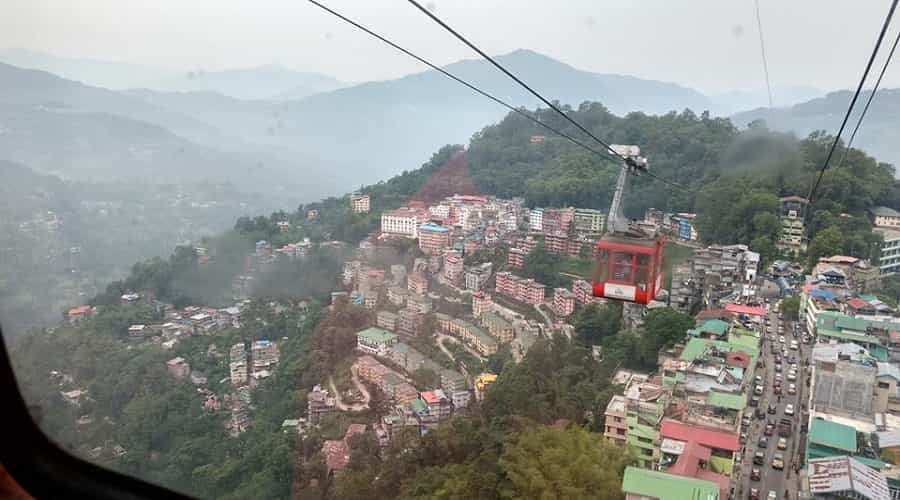
If you wish to catch a bird’s-eye view of Gangtok and its panoramic landscape from a great height, it is best to take the Gangtok cable car ride. It is a 1 km ropeway journey that starts from Deorali Bazaar and takes you to Tashiling Point in just 7 minutes. Midway, there is another intermediate terminal station—the Nam Nang terminal. The ropeway route takes you through an elevation of 3500m. The ropeway operates from 8:00 AM to 4:30 PM. A view of Kanchenjunga from the cable car is a sight you’ll cherish for a lifetime.
Bird Watching at Kewzing
- Home to rare bird species like Satyr Tragopan and Sultan Tit
- Dense forest and exotic birds ideal for avid birdwatchers
- Best visited with binoculars and a bird guide
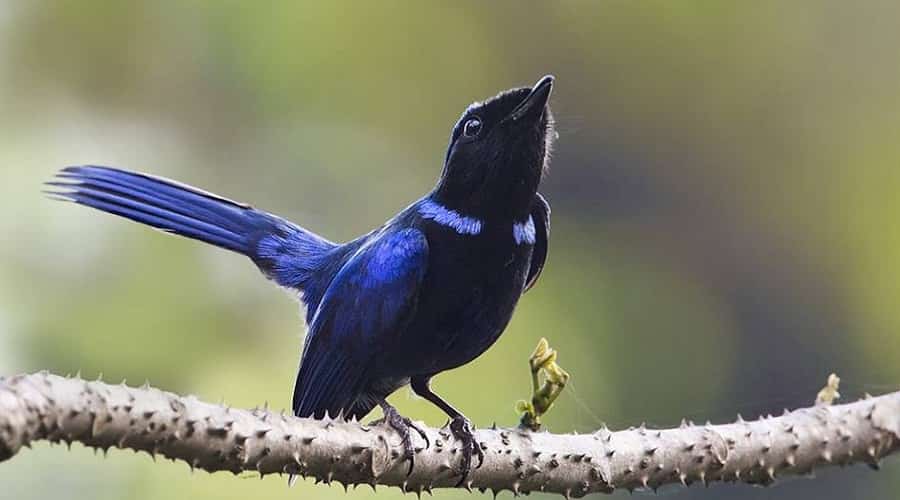
Kewzing is undoubtedly a bird watcher’s paradise. The dense woods of Kewzing are home to some very exotic bird species. A sight of these rare birds is indeed a treat for any passionate bird watcher. Some of these birds are native to the region of Sikkim and cannot be seen anywhere else in the world. To name a few, the Satyr Tragopan, Streaked Spiderhunter, Sultan Tit, Fire-tailed Myzornis, and Puff-throated Babbler are some of the rare birds of Kewzing. So, when you are heading towards Kewzing, make sure to carry your binoculars, your best camera, and, of course, take a bird guide along with you to help you with an in-depth understanding of the various species.
Go on the Goecha La Trek
- Challenging 90 km trek starting from Yuksom base camp
- Takes you up to an altitude of 16,000 feet
- Breathtaking views of rhododendron forests, meadows, and Kanchenjunga
The Goecha La Trek stands out as one of Sikkim’s most fascinating as well as challenging trekking expeditions. Trekking across the splendid Northeast Himalayan landscapes, you will get to test your endurance at every moment. The trek starts from the Yuksom base camp and covers a distance of about 90 km until you reach an altitude of 16,000 feet. As you trek your way to Goecha La, you get to witness some breathtaking marvels of nature, such as the colorful rhododendron forests of Tshoka, the emerald, sprawling meadows of Thangsing and Dzongri, the picturesque, dense woods of Sachen, the silvery strip of cascading Kokchurung, and the glittering, sapphire blue Samiti Lake.
Also, as you walk the trails of Goecha La, the sky-scraping Pandim and Kanchenjunga mountain peaks will inspire awe at every turn. The ideal time to set out on this trek is between April and June, though October-November would also be suitable. However, make sure to take a local guide along with you.
Visit the Lush Green Temi Tea Gardens
- Only tea garden in Sikkim, located in South Sikkim
- Known for organic tea production
- Offers panoramic views of Kanchenjunga and River Teesta
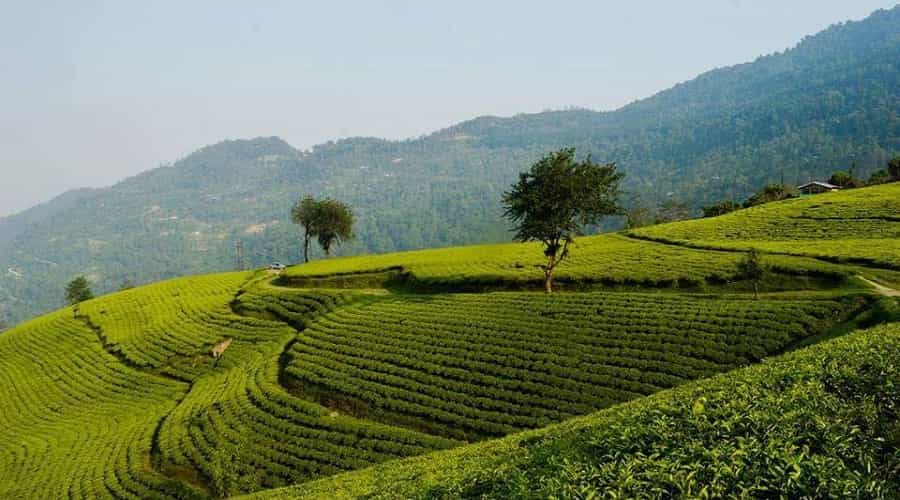
A visit to the Temi Tea Gardens of South Sikkim will refresh you thoroughly, thanks to the ethereal ambient beauty of nature and the rich aroma of freshly processed tea. This is the only tea garden in Sikkim and is located about 18 km away from Ravangla. The tea estate grows the best quality organically processed tea in the world and features hill slopes carpeted with verdant, green, manicured tea bushes. The Temi Tea Gardens offer visitors a 360-degree, compelling view of the majestic Kanchenjunga and the River Teesta. As you walk through the meandering lanes of the tea estate, you’ll feel at complete peace with yourself.
MG Road Shopping
- Main shopping area in Gangtok
- Items include Tibetan handicrafts, woolens, and local artifacts
- Bargaining is common
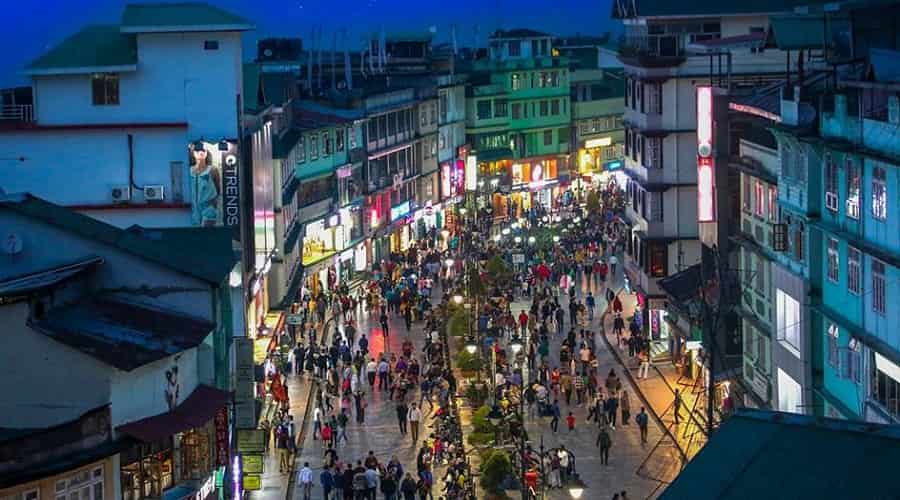
MG Road in Gangtok is a bustling shopping area where various street stalls offer a plethora of fascinating items. Your tour of Sikkim remains incomplete if you haven’t shopped from the busy MG Road stalls. Items to look out for include Tibetan handicrafts, Tibetan festive costumes, woolens and woven blankets, Feng Shui artifacts, typical Sikkimese crockery, and more. However, make sure to bargain as much as you can, as vendors often inflate the prices.
Make an Excursion to Nathula Pass
- Highest motorable pass in the world at 14,140 feet
- Historic Indo-China border and Silk Trading Route
- Includes scenic Tsomgo Lake and Baba Harbhajan Singh Temple
An excursion to Nathula Pass will not only introduce you to some heavenly Himalayan vistas but will also give you the adrenaline rush you’ve always craved. Nathula Pass, perched at an altitude of 14,140 feet, ranks as the highest motorable pass in the world. A visit to Nathula Pass takes you to the historic Indo-China border and also introduces you to the ancient Silk Trading Route between India and China. As you embark on the Nathula Pass excursion from Gangtok, the meandering Himalayan route will take you past stunning landscapes, including the beautiful, azure Tsomgo Lake and the legendary Baba Harbhajan Singh Temple. You can even choose to beat the exhaustion of the journey by sipping hot tea and freshly prepared snacks served at the military canteen at the Indo-China border.
Make an Excursion to Valley of Flowers
- Altitude: 3,500 meters above sea level
- Known for colorful alpine flowers and scenic meadows
- A visual treat, especially during spring and summer
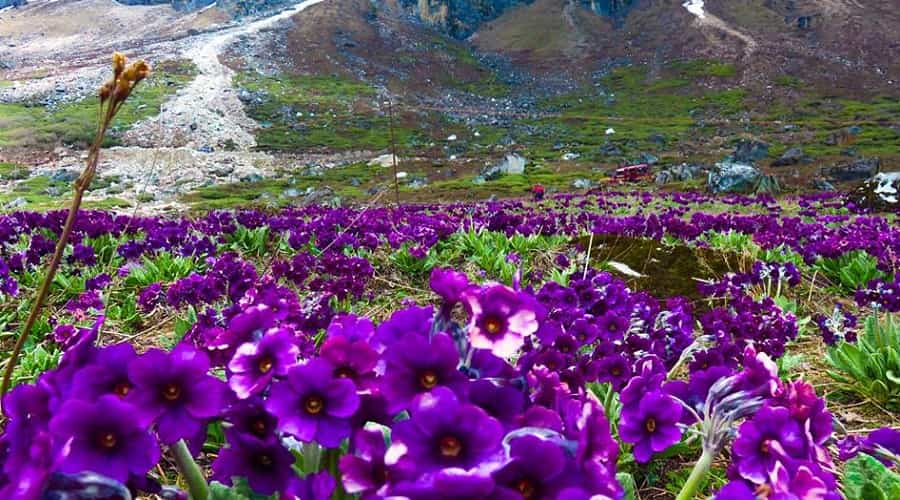
The Valley of Flowers is the name given to Yumthang Valley, situated at an altitude of 3,500 meters above sea level. This beautiful valley consists of undulating green meadows studded with colorful alpine flowers. Many rare flower species can be witnessed here, presenting a true riot of colors that will appeal to you visually and aesthetically. A visit to the Valley of Flowers in North Sikkim will be an experience you’ll cherish for a lifetime. So, make it a point to visit this exotic grassland of heavenly beauty.
Caving in Sikkim
- Sacred caves like Lha-ri-nying Phu and Pephu
- Pilgrimage sites for locals
- Best visited in February-March or October-November
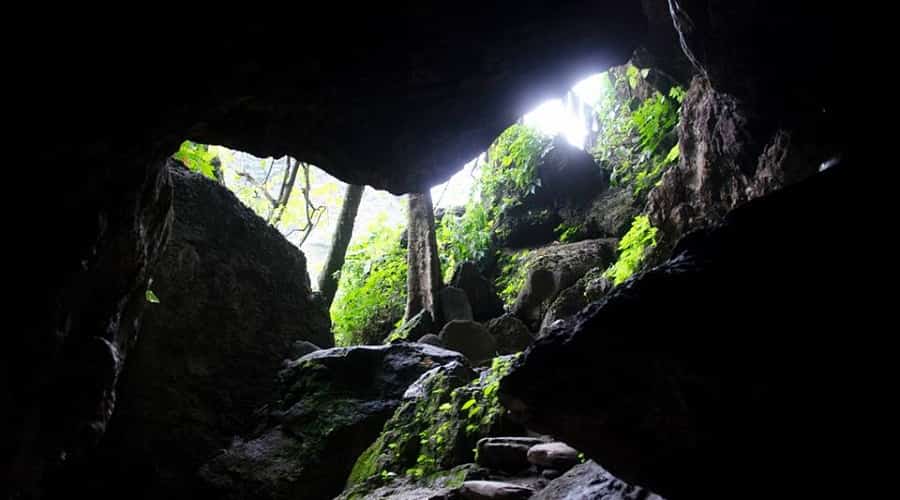
Caving in Sikkim is an adventure you shouldn’t miss. Apart from being an adventure trip, visiting the caves is also considered a pilgrimage journey, as these caves are regarded as extremely holy by the natives of Sikkim. The four most visitable caves in Sikkim include Lha-ri-nying Phu, Pephu, Kahdosangphu, and Dechhenphu. A visit to these holy caves gives you an opportunity to explore the unique interiors of a dimly lit Himalayan cave and pay tribute to the enshrined deity. The ideal time for caving in Sikkim is around February-March and October-November.
Rinchenpong Leisure Walk
- Located in West Sikkim, a peaceful, green hamlet
- Dense forests, fresh air, and beautiful scenery
- Ideal for relaxation and unwinding
The Rinchenpong Leisure Walk will be a perfect rejuvenating experience for any tourist. This lush green hamlet of West Sikkim offers ideal trails for a leisurely walk. Densely forested trails, tranquil ambiance, ample greenery, and fresh air, along with crimson sunbeams flickering through the dense forest canopy, make this walk enchanting. The slumberous lifestyle of the village adds to the charm. So, make sure to visit Rinchenpong and unwind completely with these leisure walks.
Explore the Local Sikkimese Lifestyle
- Experience authentic Sikkimese culture in Lepcha tribal villages
- Homestays offer insight into traditional lifestyles
- Enjoy local markets, food, and indigenous drinks
To understand the true essence of any place, you need to mingle with the locals. If you wish to have a sneak peek into the authentic Sikkimese lifestyle and culture, it’s best to visit the Lepcha tribal villages and stay with them instead of in a hotel. Many Lepcha homestays are available in the Dzongu region. These homestays offer a homely setup and give you a glimpse of the simple, tribal lifestyle of Sikkim’s natives. Walking along the local streets, idling away your time by simply gazing at nature, visiting local markets, and sampling Sikkimese home-cooked cuisine and indigenous alcoholic beverages are some of the major activities you should try while staying in a Sikkimese homestay.
Try Out the Adventure of Paragliding
- Soar above Sikkim’s Himalayan landscape
- Short and long-haul options available
- Best in clear weather and moderate temperatures
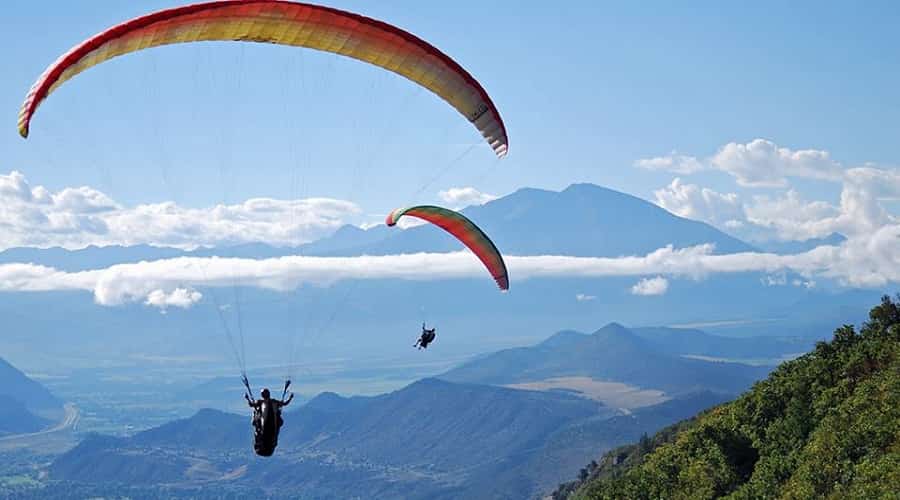
While in Sikkim, paragliding is an adventure you shouldn’t miss. It will give you the thrill of your life as you glide across the mesmerizing Himalayan landscape. Soar high in the sky on your glider’s wings and enjoy the mesmerizing views of the hill town below. This gravity-defying sport is best enjoyed when the sky is clear and bright, with moderate temperatures. Both short-haul and long-haul gliding options are available. The short hauls last about 20 minutes, while long hauls can continue for an hour. You can also opt for tandem flights, where you are accompanied by a certified pilot who will guide you through your paragliding adventure.
Don’t Forget to Taste the Sikkimese Tongba
- Traditional Sikkimese alcoholic beverage
- Made from fermented millets and served in bamboo tumblers
- Commonly offered as a gesture of respect
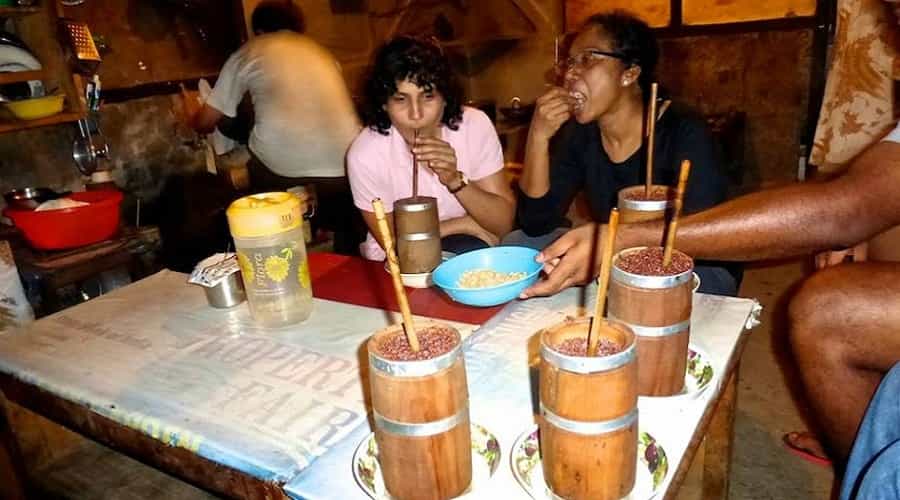
Tongba is an indigenous drink of Sikkim and is prepared in almost every Sikkimese household. It is common practice to welcome guests with a tumbler of Tongba, as it is considered a gesture of respect. This indigenous Sikkimese alcoholic beverage is made from fermented millets and boiling water and is usually served in sturdy bamboo tumblers. Many local restaurants in Sikkim serve Tongba to tourists on request, and tasting this local drink is an activity you shouldn’t miss while in Sikkim.
Relish the Native Cuisine of Sikkim
- Sikkimese food blends Indo-Tibetan influences
- Must-try dishes include momos, Thukpa, and Gundruk ka Jhol
- Popular eateries include Gupta Restaurant and Taste of Tibet
If you are a foodie, you’ll definitely want to taste the authentic native cuisine of Sikkim. It will indeed be a palate-pleasing experience, as you will get to try some superb Indo-Tibetan delicacies, smothered in a variety of sauces and fresh, aromatic, indigenous spices. The street food stalls, dhabas, and restaurants of Sikkim all sell traditional Sikkimese food items like Gundruk ka Jhol, Sisnoo, pork curry, fermented soybeans, momos, Sikkimese lentil soup and chutney, Thukpa, Gyathuk, etc. Make sure to pamper your taste buds with these foods. Gupta Restaurant, Taste of Tibet in Gangtok are some of the most reputed eateries in Sikkim. However, for an exotic and classy dining experience, make your way to the restaurant 9’INE, where the dining culture and hospitality complement the high quality of food served.
Gangtok-Rangpo Mountain Biking
- Challenging trail through dramatic landscapes
- Offers a view of traditional Sikkimese life
- Ideal months: April-May and September-October
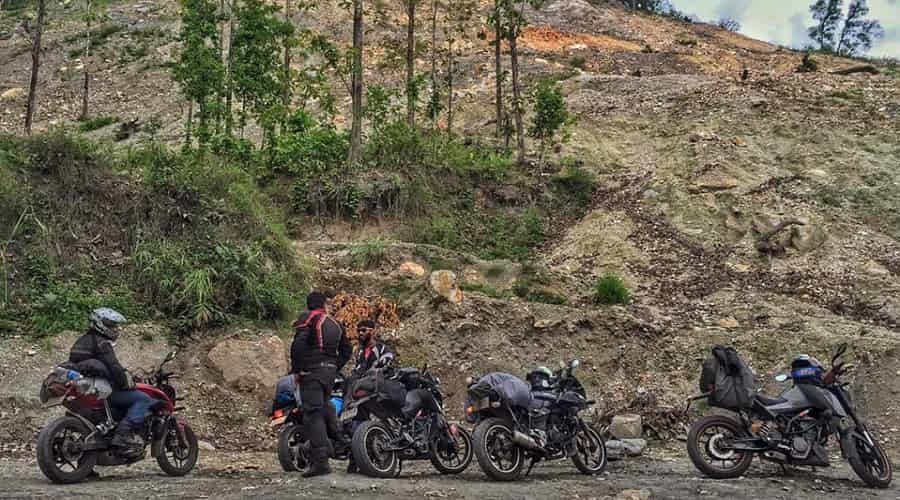
If you’re a passionate biker, don’t forget to try the Gangtok-Rangpo mountain biking trail. As you bike your way through dramatic and picturesque landscapes, this intriguing biking trail will challenge your endurance while offering marvelous views of nature. You will also get a glimpse of the traditional Sikkimese lifestyle of the locals. The ideal time to set out on this mountain biking adventure is around April-May and September-October. Both solo and group biking can be done on this route.
